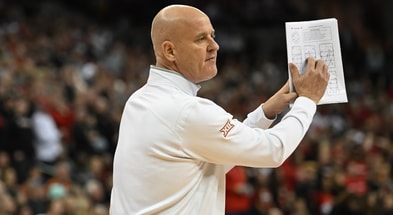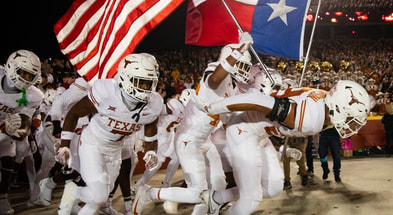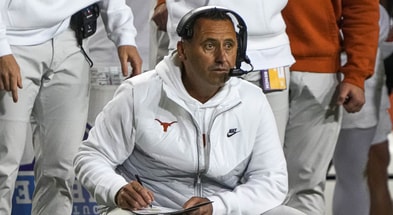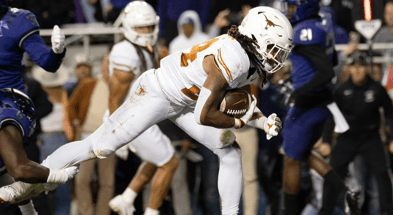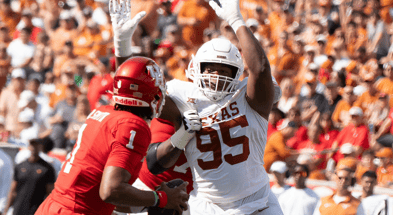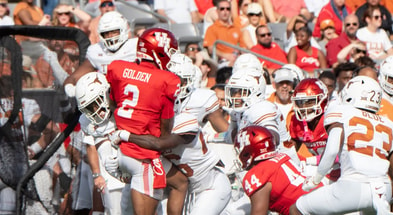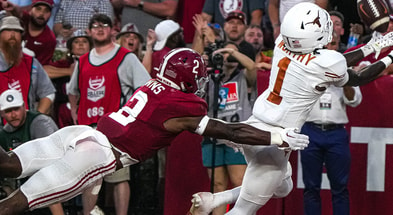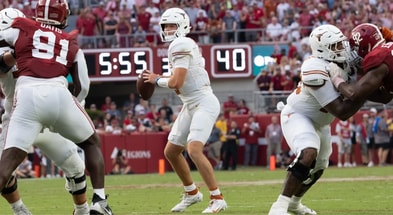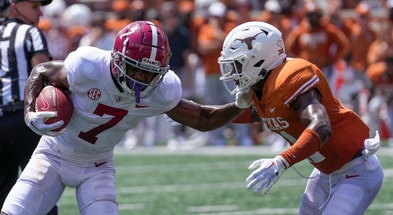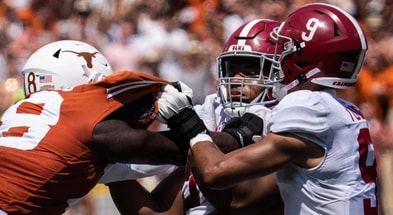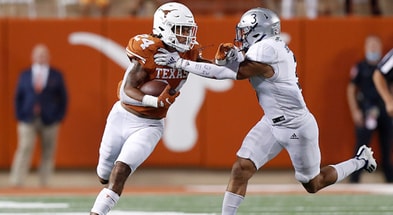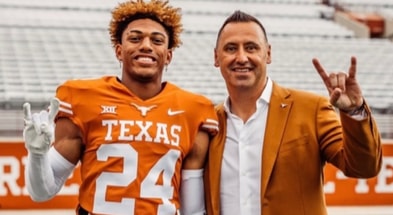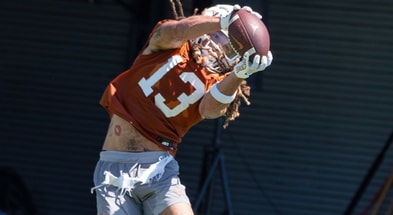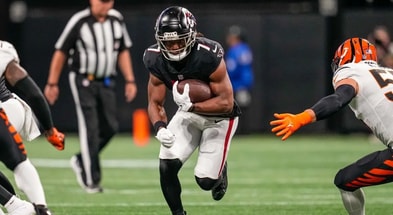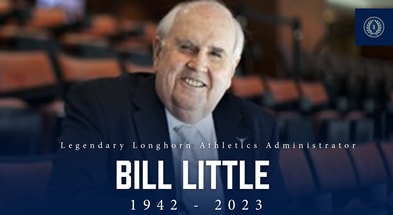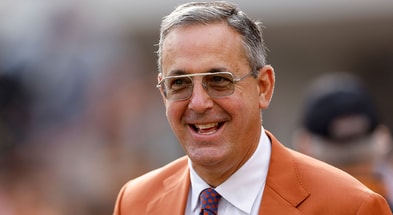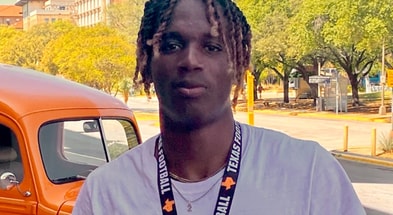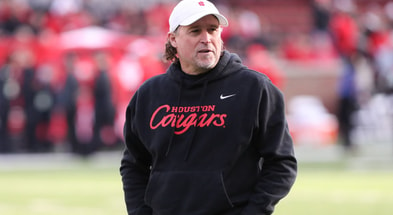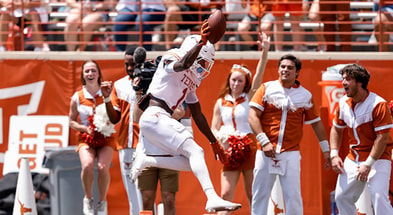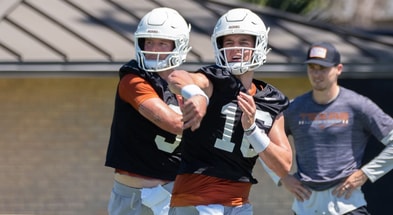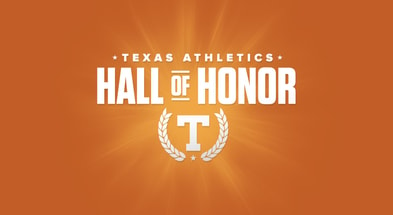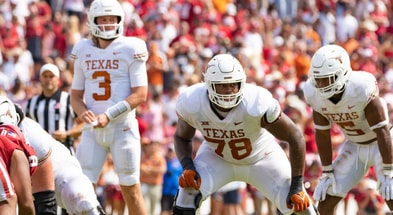Checking in on Big 12 quarterback play after Week 1
In our wrap-up on Monday I left out any reflections on three notable teams, Oklahoma State, TCU, and West Virginia. The Mountaineers actually played a serious, competitive game against the Maryland Terrapins which was more illustrative of their potential this season. The other two faced lower level squads in less meaningful contests.
Still there were a few things to be gleaned from the weekend’s events. I also have some additional thoughts on Lincoln Riley’s Sooners and their brush with playoff death against Tulane.
Gary Patterson’s scrimmage
I can’t for the life of me understand why TCU was playing against Duquesne in Week 1, this was one of the worst college football teams I’ve ever seen. Granted, Max Duggan still managed to throw them a pick on a super lazy 4-verticals play where he laid the ball out on the near hash for his slot receiver coming from the wide hash. Duquesne’s Cover 2 safety on the near hash picked it off, all too easy.
“This is why we don’t throw in the middle of the field!!!” -Gary Patterson immediately afterwards, probably.
Overall these look like the Horned Frogs I expected. They were aggressive with the RPOs, flinging hitches and slants around outside against Duquesne’s slow-footed defenders and then finishing drives inside against an over-matched defensive front. It was easy stuff, like playing 7on7, and their opponent couldn’t catch or tackle their better players. Are we counting this toward Gary’s career victories at TCU?
Next week they get the Cal Bears, who opened their season with a tough loss against Nevada 22-17. The Bears probably can’t score enough to beat TCU but this should be a considerably better test of their offense. Until then, I’m not making much of TCU’s season to date.
Checking in on Jarrett Doege
On review, West Virginia’s opening loss to Maryland wasn’t too concerning for their chances of making a play for the Big 12 title game save for a couple of moments which were VERY concerning.
Tua “Case” Tagaovailoa isn’t really living up to my moniker for him, sadly for my nickname and happily for the Terrapins. He’s a terrific operator of Mike Locksley’s RPO spread and the Terps have a few real talents they’re distributing to. Their challenges as a team recruiting out of “the DMV” (D.C./Baltimore/Northern Virginia) are basically exactly what you’d expect. They have been able to keep a few local skill talents home, like 5-star slot Rakim Jarrett, and even pull in a few more from South Florida. Meanwhile the offensive line has several lower 3-star players but they did manage to keep a bigger local athlete home in Jaelyn Duncan (4-star, 6-foot-6, 320 pounds) to play left tackle.
All that to say, this is a team with upper tier Big 12 talent levels and not the easy mark their historic Big 10 record would make them out to be, especially when their starting quarterback is healthy. Tom Herman can vouch for me here.
West Virginia played them very competitively and arguably lost the game because of two particular plays.
I know Doege had another interception as well, I actually didn’t think it was nearly so bad although it was very costly. If you didn’t see the game, West Virginia had the ball in the red zone and Maryland dialed up a zero-safety blitz. Doege, who’d just reached the end zone by nailing a slot fade to Sam James, threw up another one but I’d argue the outside receiver Bryce Ford-Wheaton had AWFUL spacing and actually allowed the corner to drift back and beat the slot to the corner of the end zone where the ball was thrown.
These two plays above? Bad. The interception is awful, just throw the ball away. Doege had several good throws in this game and some of them featured the improved pocket footwork Neal Brown mentioned at Media Days, but it’s hard to overcome mistakes like this one.
The Leddie Brown fumble is just a classic “mano a mano” battle which went decisively against West Virginia. The rest of the game wasn’t the shellacking this play was but my goodness. The linebacker on the hit was a 4-star freshman Maryland pulled out of Florida named Branden Jennings.
Otherwise, West Virginia looked solid. Akheem Mesidor and Dante Stills were good, the safeties helped them control the middle of the field some, and Vandarius Cowan didn’t get hurt. Can Jarrett Doege play a complete game like a veteran?
Neal Brown and his staff schemed open a lot of opportunities for Doege, many of which he hit, but they need him to not lose his mind.
Mike Gundy’s nightmare
Spencer Sanders was held out for “COVID protocol” reasons and Oklahoma State had to play Bobby Petrino’s Missouri State, loaded up with transfers, with Shane Illingworth. Oklahoma State also lost “Leo” linebacker (their featured edge position) Trace Ford to a season-ending injury in practice.
Bad week all around for the Cowboys.
They eked by Missouri State 23-16. Shane Illingworth did most of the heavy lifting with 315 passing yards, their running backs combined for 24 carries which yielded 53 yards at 2.2 ypc. There’s your concern.
The context really matters though. Oklahoma State was missing Spencer Sanders and ancillary Logan Carter, which are options A and B for blocking a nickel front. In the spread offense you have essentially five options for blocking a nickel front (six-man box) by the defense.
- You leave a defender unblocked for a quarterback run read.
- You leave a defender unblocked for a quarterback pass read.
- You play an ancillary (tight end, fullback, hybrid) and block six with six.
- You don’t. You just throw the ball when you get a 6-man box.
- You run into numbers and hope the sixth guy can’t get to the running back.
Shane Illingworth can’t run the option and without Logan Carter the Cowboys were better off playing with four wideouts, so that left throwing the ball or else running into numbers.
Some additional context, the Cowboys were trying to do their work with Taylor Miterko and Jake Springfield at the tackle positions. Miterko was surprisingly solid, his athleticism went well in pass protection, although his run blocking lacked some oomph. Springfield wasn’t great either in protection or run blocking, life is different without Josh Sills inside of you it seems.
The questions moving forward are how this all looks if/when they have Sanders and Carter back? Since Carter is injured and has missed time, I’m guessing 10 personnel will be a fact of life for OSU this season, maybe 20 personnel as well given their depth at running back. That’s going to mean a lot of keeper reads for Sanders and a lot of throwing, potentially upwards of 50+ plays a game where Sanders is either throwing or running the ball (40 throws, 10 runs). That’s a tough life to live, extremely taxing both mentally and physically, is Sanders up for it?
Speaking of taxing the quarterbacks and having run game numbers worked out…
Oklahoma’s four-minute offense
Oklahoma is 19-7 in one score games since hiring Lincoln Riley as their play-caller for the 2015 season. 19-7 is awfully good, it’s pretty hard to win a lot more close games than you lose, they can typically go either way.
Since making Spencer Rattler the quarterback in 2020 the Sooners are 3-2 in one-score games and some of the details are a little worse. Their narrow wins over Texas and Iowa State in 2020 included bleeding away multi-score leads, as did the victory last Saturday over Tulane. The loss to K-State in 2019 also included the erasure of a considerable lead.
In those five games, Rattler threw seven total interceptions and added a bad fumble against Texas. Two of those interceptions ended Oklahoma’s final drives against Iowa State and Kansas State in the Sooners’ consecutive losses in 2020. All that said, I’m not totally sure if Rattler’s picks are the main fundamental issue confronting Oklahoma.
In our OK State section above I talked about what teams can do on standard downs in the spread offense when defenses play a six-man box. There’s a follow-up to that question, what happens when you get a seven-man box? Because if you’re up by multiple scores in the second half, or you’re in the red zone, you’re getting seven-man boxes even if you have a blocking ancillary on the field. The defense isn’t going to let you just run the clock out when their offense needs the ball for a chance to catch up.
Here are your options for running the ball when the defense involves a seventh defender against your 11 personnel spread set.
- You leave a defender unblocked for a quarterback run read.
- You leave a defender unblocked for a quarterback pass read.
- You play another ancillary (tight end, fullback, hybrid) and block seven with seven.
- You don’t. You just throw the ball when you get a 7-man box.
- You run into numbers and hope the seventh guy can’t get to the running back.
Oklahoma’s issues are minor compared to Oklahoma State’s dilemma here against Missouri State, but they are still there. You don’t want to run Spencer Rattler to protect a lead, he’s not built for it and he’s not consistently effective either.
Option two is to put another blocking tight end on the field with Jeremiah Hall. The Sooners’ options here are Brayden Willis, who was blown up on a 4th-and-1 in this game:
Or maybe Austin Stogner…
This play is actually a good glimpse of two issues here for Oklahoma. Stogner is blown up at the point of attack, wrecking the design of the play, except Rattler kept the ball on the backside only to be tracked down and licked.
On Oklahoma’s last fourth quarter drive, Riley opted for the “just throw it” option against a loaded box. This failed in two regards. First of all, they couldn’t finish the drive in the red zone where “just throw” is a tougher proposition. They had to settle for a field goal and missed it. Perhaps they should have run Caleb Williams more, both in the red zone and in short-yardage. Secondly, Marvin Mims got lit up going over the middle on this drive. Would have been nice to spare him such a hit in a game against Tulane where they had held a nice lead.
There’s also the dynamic of Oklahoma only having two scholarship running backs on campus, which further complicates matters. Overall we’re talking about a dynamic which matters in terms of either winning close games or avoiding them entirely, but those margins can obviously matter in the Big 12.
Before the season I figured a substantial variable in whether Oklahoma could finally break through and win the playoffs was the growth from Spencer Rattler as a field general. Now I think they’ll need a lot from him there just to win the Big 12.
Pursuant to our earlier point on Spencer Sanders and the heavy load he’ll need to carry this season for the Cowboys, Rattler attempted 39 passes and had eight “runs” against Tulane. That’s a heavy workload and a lot of hits, hits which take their toll over the course of a season. Riley’s need to balance protecting his thin depth chart at running back will also have to be balanced against the need to protect his quarterback.
Worth monitoring.
